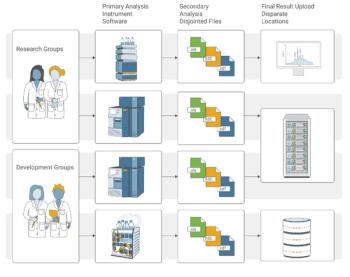
The Data Integrity Model
The scope of data integrity is shown by the data integrity model, which sits within the overall pharmaceutical quality system of a regulated laboratory.
The scope of data integrity is shown by the data integrity model (seen in the figure below), which sits within the overall pharmaceutical quality system of a regulated laboratory. Analysis takes place at Level 3 in this model, but to ensure both data quality and integrity it is imperative that the elements of the Foundation and Levels 1 and 2 are in place. The analogy of this model is building a house.
Foundation: A house starts with the foundations; otherwise the building falls down. The data integrity model also starts with a Foundation comprising management leadership, quality culture, and ethos, using trained and competent staff. To ensure that the Foundation works, it is essential to keep up to date with current regulatory trends—monitoring both new regulatory guidance documents and trends in non-compliance.
Level 1: At Level 1 is the right analytical instrument and computerized system for the job. Here, a regulated laboratory should be aware of the trends in qualification of analytical instruments, such as the proposed changes in Unites States Pharmacopoeia (USP) chapter <1058> from Analytical Instrument Qualification (AIQ) to Analytical Instrument and System Qualification (AISQ).
Also at Level 1 is computerized system validation (CSV), which is often thought of as being a regulatory burden rather than a business benefit. FDA is proposing changing CSV to computer system assurance (CSA), but is this new approach really needed? Is there the flexibility already available in current regulations and industry guidance? And is the conservative nature of the pharmaceutical industry as much of a barrier as the regulations?
Level 2: Level 2 is the right analytical procedure for the right job. USP chapter <1220> on analytical life cycle management presents a different way of validating analytical procedures compared with ICH Q2(R1). In USP <1220> method development is the critical component of the life cycle and a scientifically sound approach to the design of the analytical procedure begins with the defining the analytical target profile (ATP).
It is critical that the Foundation and Levels 1 and 2 are in place and effective, otherwise any analysis work performed at Level 3 will have data integrity vulnerabilities.
Further Reading
For more description of the data integrity model, please see the following articles:
McDowall, R. D. Understanding the Layers of a Laboratory Data Integrity Model. Spectroscopy 2016, 31, (4), 14–23.
McDowall, R. D. Data Integrity Focus, Part 1: Understanding the Scope of Data Integrity. LCGC N. Am. 2019, 37 (1), 44–51.
Newsletter
Join the global community of analytical scientists who trust LCGC for insights on the latest techniques, trends, and expert solutions in chromatography.




